Kamikatsu Awabancha festival
The Kamikatsu Awabancha association organised a small tea festival on the 10th of December of 2023 in a beautiful area near the village, the zero waste hotel.
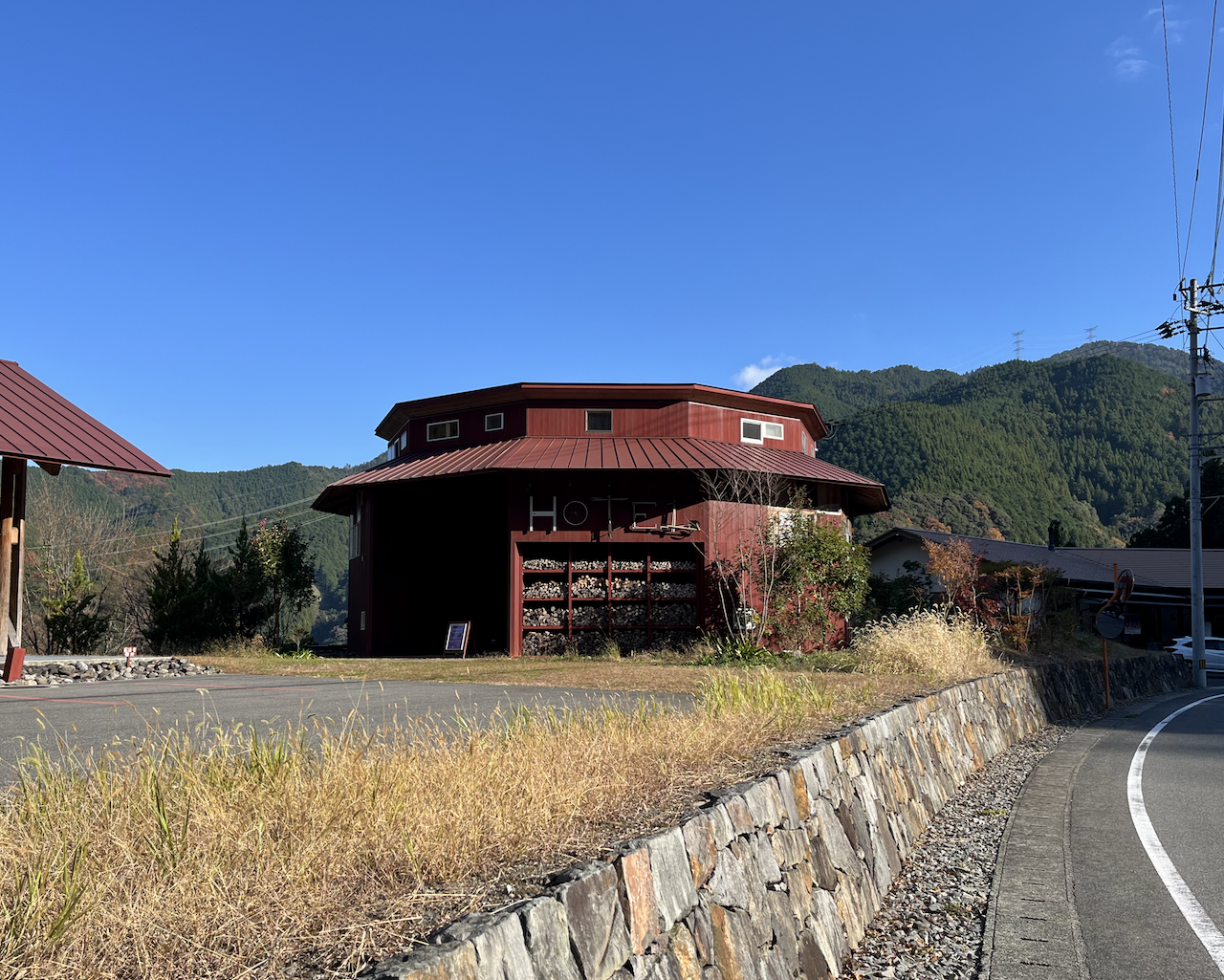
The Kamikatsu Awabancha association organised a small tea festival on the 10th of December of 2023 in a beautiful area near the village, the zero waste hotel. Yes, the event took place on the grounds of the unique recycling centre, zero-waste hotel and community space of Kamikatsu, a village of around 1.200 people. The weather was beautiful and slightly warm. Perfect for enjoying a warm drink from the many farmers showcasing their Awabancha teas.
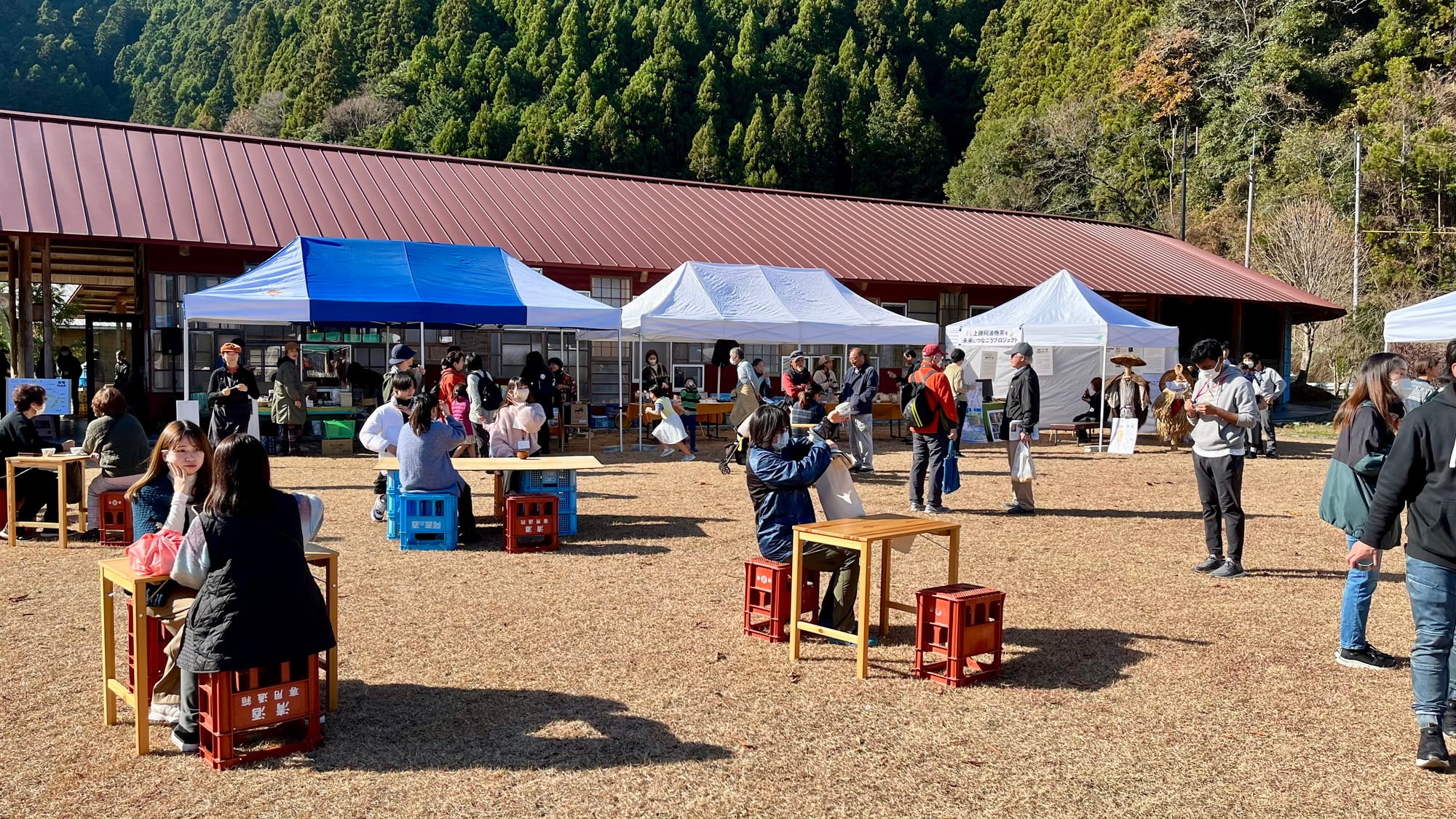
There were 16 stalls, 9 of them run by farmers or, in this case, 2 tea shops from the area selling Awabancha from farmers without a stall at the event. There was also a sake brewery, selling unfiltered Nigorisake and a couple of local cafes serving Awabancha and some homemade baked goods, some including Awabancha or other local specialities like tangerines and yuzu. One of my favourite stalls was from the Shinobu-chan's stall, an Awabancha farmer who grows rice. She was serving both Awabancha and Ochazuke made with local ingredients. You could even choose among 3 different Awabancha from different families to pair it with your lunch. One more aromatic, one stronger and bold flavour and one more sweet and round, I opted for the sweet and round one, and it was delicious.
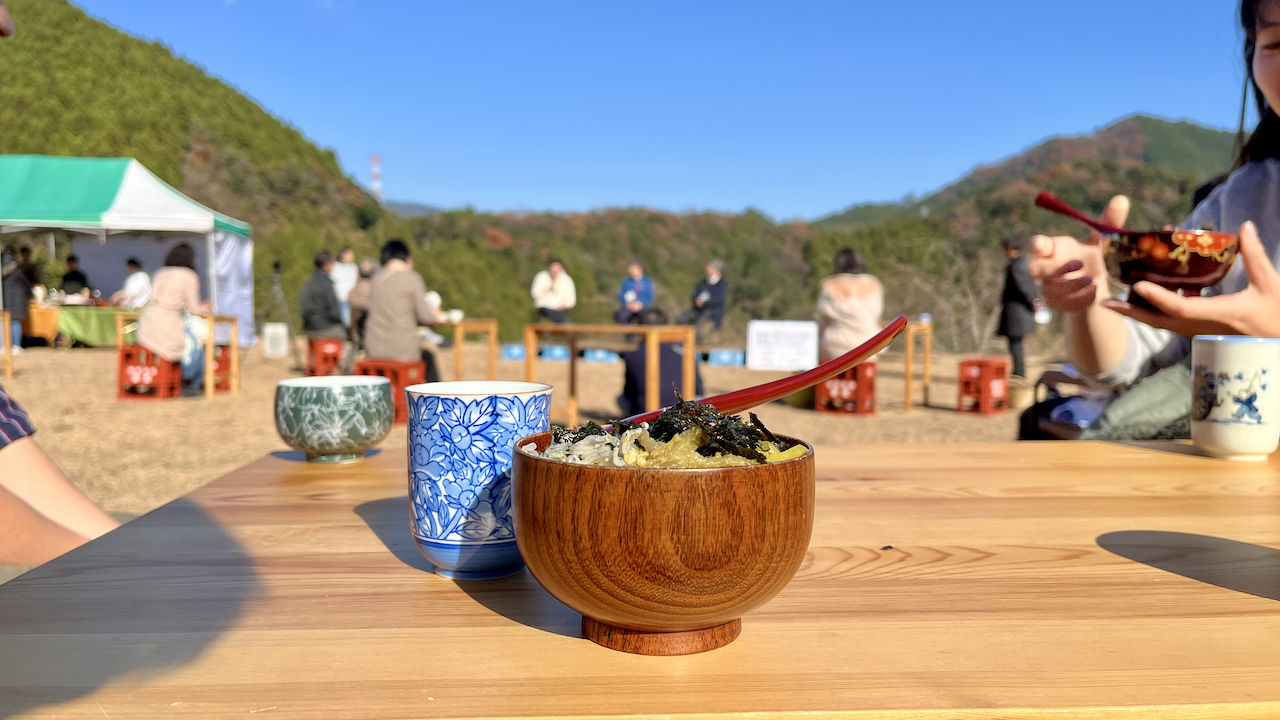
I also found a delicious Awabancha ice cream in a shop close to the event location, where you can buy some teas and local products outside of the event days and the village itself.
Apart from the stalls, there was also a talk by Professor Fukui, a medical researcher from Tokushima University. The talk revolved around allergies and how certain compounds found in Awabancha could lead to supplements or new ways to prevent or reduce allergy reactions. After that, there were two different panel discussions with 3 farmers in the first and another panel with one farmer, someone from the local town council and Professor Fukui. I could only attend the first one, and the talk was about the process of making the tea and how they are trying to develop a new way to popularise the drink.
There was an interesting overlap where they talked about the differences in how the three of them produce the tea. The emphasis was that every family tea is a bit different, but they all help each other. One of my favourite parts was seeing how they are trying to implement a Community Supported Agriculture program (CSA) through the Kamikatsu Awabancha Association. The idea began rolling in 2021 and slowly defined and grew itself, first by spreading information about Awabancha and then by creating an ownership and member program. Lastly, these efforts culminated in the creation of the Awabancha festival.
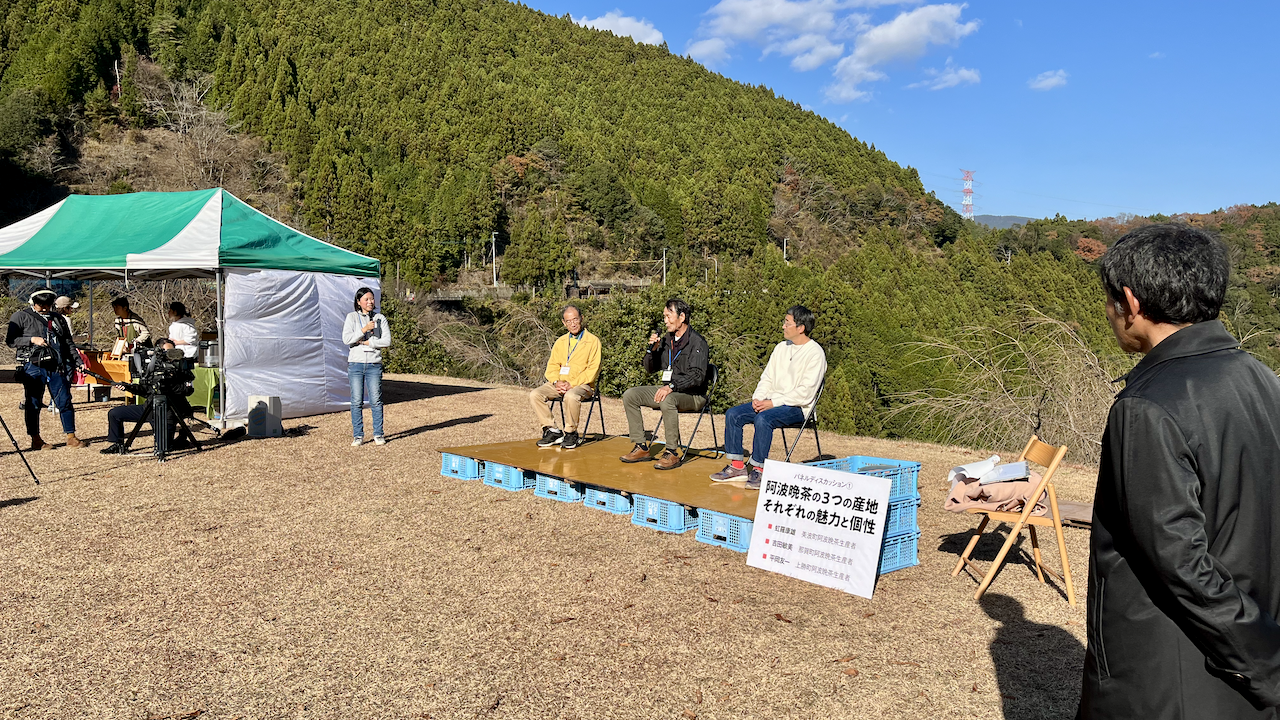
Awabancha and the Kamikatsu community
Awabancha is a post-fermented tea from Tokushima prefecture from Kamikatsu and Naka villages. In the early 8th century, what is now the Tokushima prefecture area was known as Awa province, hence the name. In this case, bancha is written using the ban 晩 kanji instead of the more common ban 番 for other teas. This indicates later harvest, in the case of Awabancha, summer.
Awabancha was usually processed using tea trees grown by the family or forest-grown tea trees called Yamacha. It was then processed at home and later consumed by the producing families themselves. Although the custom of drinking tea was common, trading tea came much later. Nowadays, although there are some pockets of wildly growing trees, tea grown in tea gardens in the area is used. During the event, I could see mainly Zairai and Yabukita being used, with a farmer selling Sayamakaori out of a big cardboard box by the weight.
Although there is an agreed general method of production, as it was a tea commonly made at home, each family handed down a slightly different recipe. Production amounts are low, so sometimes it's difficult to buy tea from your favourite farmer. It is also said that the bacteria living in each farmer's sheds and tools used for production are different, including the bacteria carried over from the harvesting site and plant itself, and so the flavour of the several families producing it. All the teas at the festival were delicious, and it was interesting to see differences in aroma, texture and flavour.
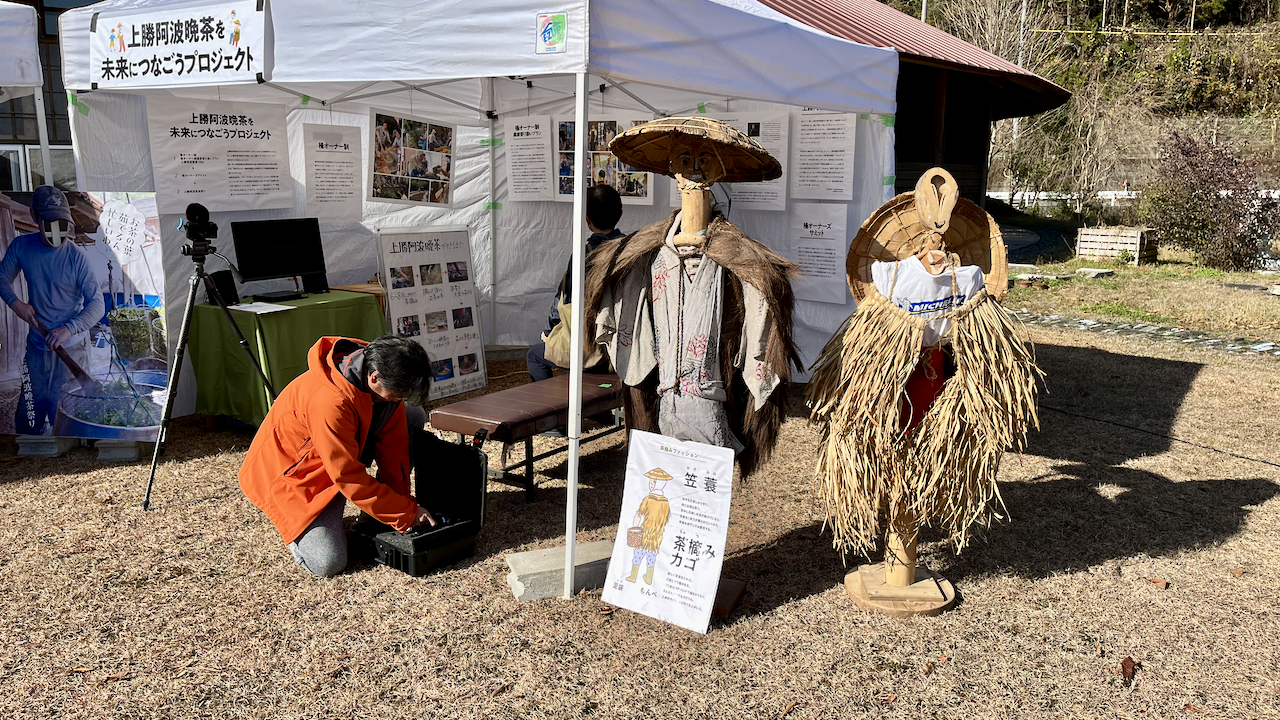
A common trait in most farmer's stalls is limited quantities and products. For example, I could not later buy the tea from Shinobu-chan's stall as it had very few amounts left for serving during the event. Matsushita-san could only sell a limited amount of leaves before he only had tea bags of Awabancha for sale. Another farmer, Hiraoka-san, one of my favourites, had only handmade tea bags so you could brew them in a 1-litre pot at home. Although she said perhaps she could package something loose depending on the stock left at home.
It was great to see so many young people involved and volunteering at the event, from the reception entrance to every one of the stalls. Mainly helping to brew some tea so the farmers were free to speak with customers and also helping arrange the talk and small discussion panels. Villages like Kamikatsu have a strong community relationship, and you could feel how the entire Kamikatsu village poured in to help in any way at the event. From the small food stalls, the people helping find parking spots for cars and, in general, helping in and around the event area. There was always an abundant amount of people ready to help.
Production method and brewing
Several farmers explained how they get help from people from the village when producing the teas. And outside support through volunteers and ownership programs, trying to jumpstart a community-supported agriculture (CSA) program to promote Awabancha and its producers.
As stated above, although there is an agreed production method, there might be some disparity and variation among farmers. A quick overview of the Awabancha process: after harvest in summer, the tea is first boiled, crushed or bruised, pressed, fermented and then dried. The fermentation process lasts up to a month. During this time, the tea is fermented by lactic acid bacteria. A more detailed description would be as follows:
- Harvesting happens in summer, from late June to early August, harvesting fully grown tea leaves, commonly by hand. Yamacha tea trees grow on steep slopes, and it is hard work.
- The picked tea leaves are separated from the branches by hand, and some buds or small leaves are also removed as they will not keep their shape for the entire process. The leaves are processed together with leaves harvested for up to 2 or 3 days and boiled in a pot for around 30 minutes
- Using a rolling and twisting machine similar to the ones used in sencha production and in other countries, the leaves are rolled for a bit. This used to be done by hand, and some farmers do not have this machine or use one from a neighbouring farmer.
- The rolled leaves are transferred into a small barrel or similar, where they will undergo the fermentation process. It is important to remove all the air bubbles for this anaerobic reaction. They use a pestle or flat wooden tool to compact the leaves. This process takes anywhere from 2 to 4 weeks, and the farmer can achieve certain levels of flavour strength by adjusting the amount of time the fermentation is performed.
- After the fermentation, they loosen the pressed tea leaves and spread them on top of bamboo, reed mats or any plastic tarp and let them dry for 2-3 days in the sun. Here, the summer weather helps to dry. But at the slightest sign of rain, the farmers will rush to put the tea under a roof or indoors. After drying, they might remove debris or thick stems and ready it for packaging and storing for the year.
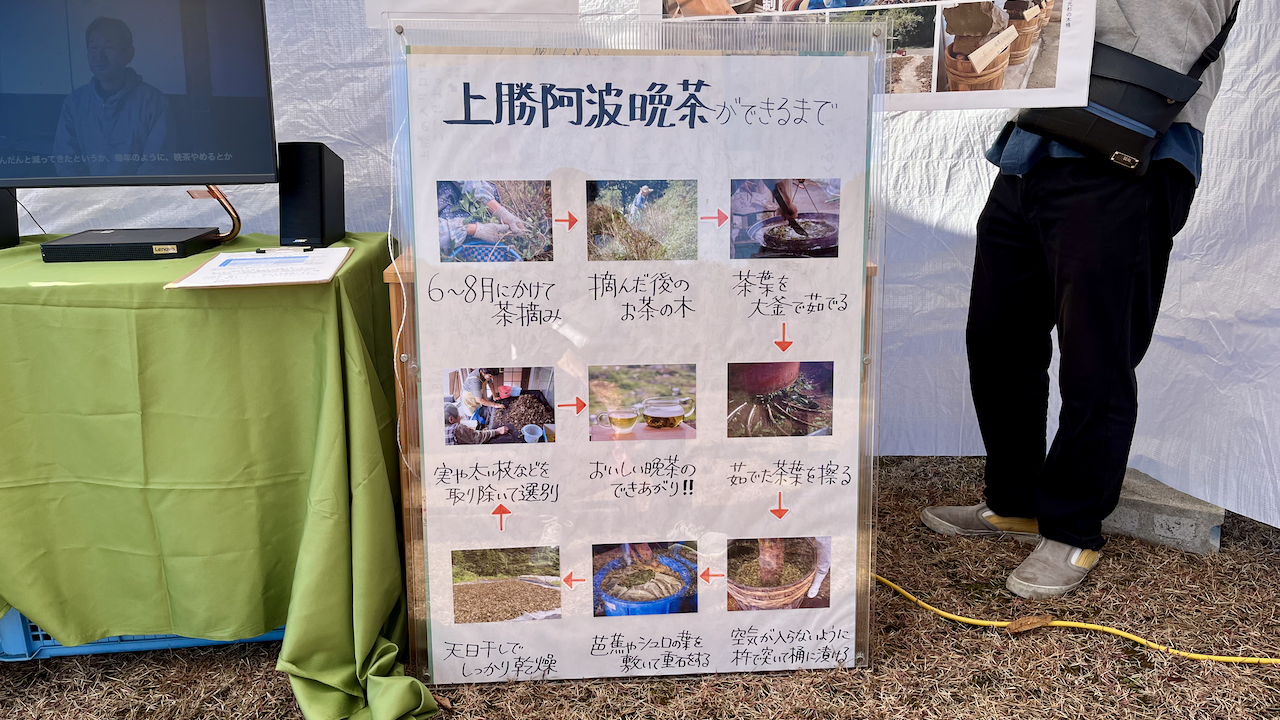
It is traditionally boiled for a couple of minutes in a kettle. It brews nicely in a Kyusu or porcelain teapot as well. At the festival, several farmers were serving it in cold brew fashion. A guideline given by the farmers at the event was to use 10 grams in 1 litre of water and hot, almost boiling water, let it brew for 3-5 minutes and enjoy. Some stalls even left the tea inside the pot and refilled the water while gently boiling it in between brews.
